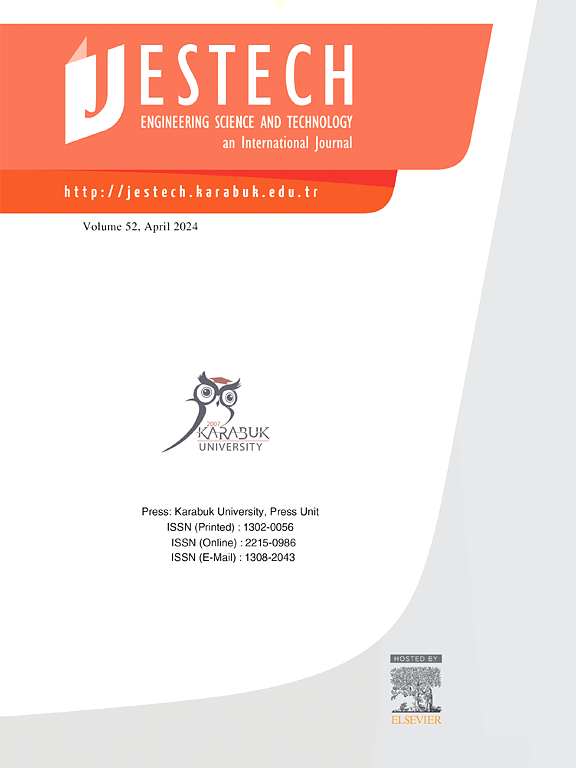State-of-the-art and future trends in electric vehicle charging infrastructure: A review
IF 5.1
2区 工程技术
Q1 ENGINEERING, MULTIDISCIPLINARY
Engineering Science and Technology-An International Journal-Jestech
Pub Date : 2025-02-01
DOI:10.1016/j.jestch.2025.101946
引用次数: 0
Abstract
In this era of global warming and climate change, the trend towards “GO GREEN” is gaining significant attention because of its advantages for the world in general and society in particular. One of the most significant aspects of this “GO GREEN” is the sustainable mobility sector, which focuses not only on reducing the usage of fossil fuels but also on enhancing the efficiency of the transportation system. The most critical infrastructure required in the sustainable transportation ecosystem is the Electric Vehicle Charging Stations (EVCS) as it plays a crucial role in increasing the acceptance of Electric Vehicles (EVs). However, a detailed study of the existing EVCS infrastructure is vital for further deepening the research in this area so that future EVCS infrastructure can be developed by overcoming current shortcomings and addressing the needs of the EV ecosystem. Given this fact, this paper investigates in detail the significant aspects, current progress, and future trends associated with the EVCS and its sub-units like power converters, Energy Storage Systems (ESS), charging technologies, etc. This paper primarily focuses on the power converters and the charging technologies as this forms the ‘heart’ of an EVCS, while also elaborating on other associated topics like ESS, EVCS classification, etc. This paper also discusses in detail the issues faced while charging EVs in extreme weather conditions by considering the case of EVs not charging in Chicago in January 2024 and also discusses how the new charging techniques like Constant Current Constant Temperature Constant Voltage (CCCTCV) can help in overcoming such issues. Various important papers in these areas, their contributions, and shortcomings are deliberated in this paper. This paper also highlights the important power converter topologies and charging technologies, their features, characteristics, advantages and disadvantages, and their application scope in the EV ecosystem. The combination of conventional power converters with advanced control techniques, dynamic charging techniques, and post-Li-ion ESS will help in building a futuristic, reliable, and resilient EVCS infrastructure.
求助全文
约1分钟内获得全文
求助全文
来源期刊

Engineering Science and Technology-An International Journal-Jestech
Materials Science-Electronic, Optical and Magnetic Materials
CiteScore
11.20
自引率
3.50%
发文量
153
审稿时长
22 days
期刊介绍:
Engineering Science and Technology, an International Journal (JESTECH) (formerly Technology), a peer-reviewed quarterly engineering journal, publishes both theoretical and experimental high quality papers of permanent interest, not previously published in journals, in the field of engineering and applied science which aims to promote the theory and practice of technology and engineering. In addition to peer-reviewed original research papers, the Editorial Board welcomes original research reports, state-of-the-art reviews and communications in the broadly defined field of engineering science and technology.
The scope of JESTECH includes a wide spectrum of subjects including:
-Electrical/Electronics and Computer Engineering (Biomedical Engineering and Instrumentation; Coding, Cryptography, and Information Protection; Communications, Networks, Mobile Computing and Distributed Systems; Compilers and Operating Systems; Computer Architecture, Parallel Processing, and Dependability; Computer Vision and Robotics; Control Theory; Electromagnetic Waves, Microwave Techniques and Antennas; Embedded Systems; Integrated Circuits, VLSI Design, Testing, and CAD; Microelectromechanical Systems; Microelectronics, and Electronic Devices and Circuits; Power, Energy and Energy Conversion Systems; Signal, Image, and Speech Processing)
-Mechanical and Civil Engineering (Automotive Technologies; Biomechanics; Construction Materials; Design and Manufacturing; Dynamics and Control; Energy Generation, Utilization, Conversion, and Storage; Fluid Mechanics and Hydraulics; Heat and Mass Transfer; Micro-Nano Sciences; Renewable and Sustainable Energy Technologies; Robotics and Mechatronics; Solid Mechanics and Structure; Thermal Sciences)
-Metallurgical and Materials Engineering (Advanced Materials Science; Biomaterials; Ceramic and Inorgnanic Materials; Electronic-Magnetic Materials; Energy and Environment; Materials Characterizastion; Metallurgy; Polymers and Nanocomposites)
 求助内容:
求助内容: 应助结果提醒方式:
应助结果提醒方式:


